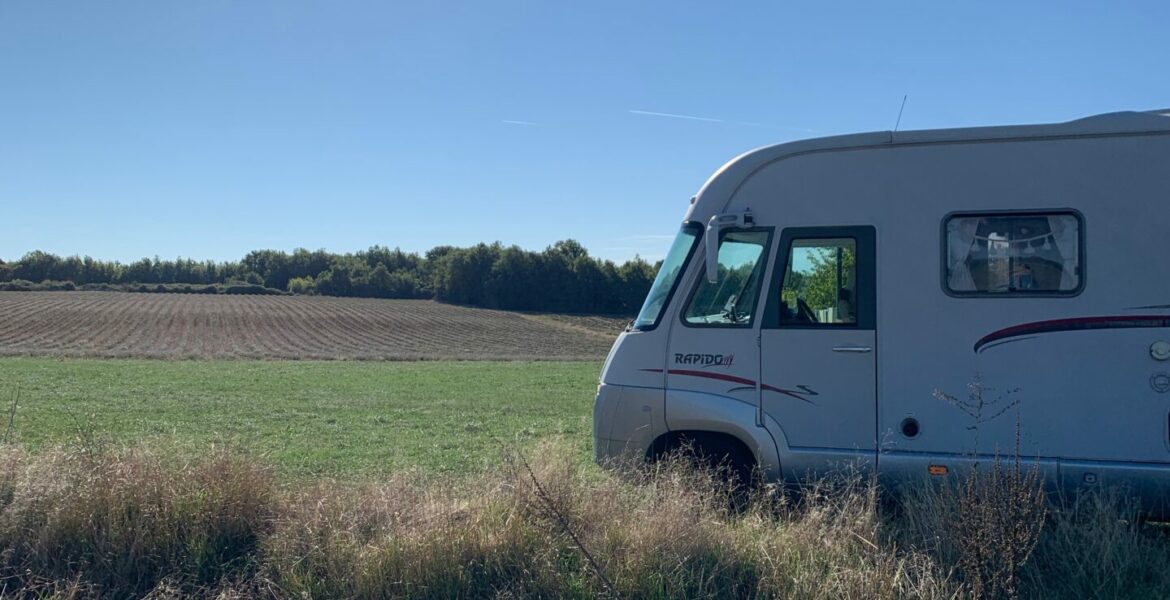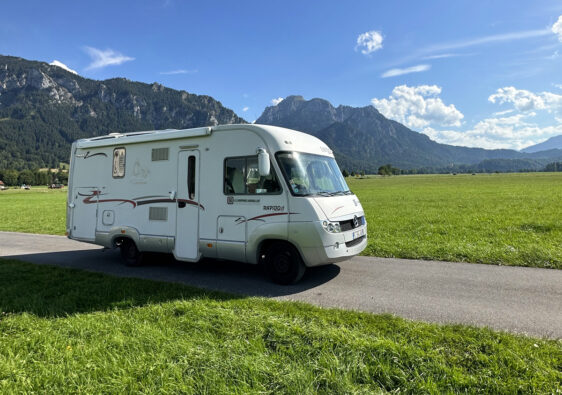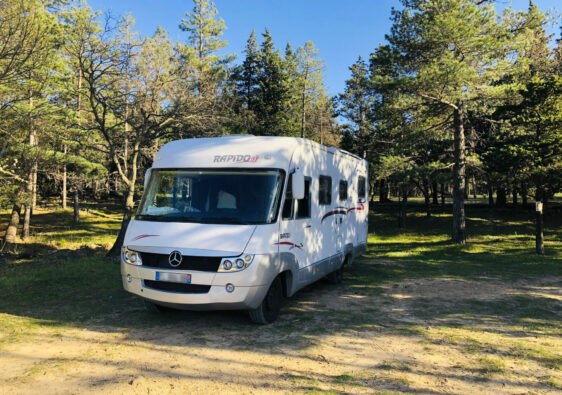✍️ This article was originally published on 10 August 2023, it was updated on 19 June 2024.
Electric autonomy is crucial for campervan enthusiasts and travelers in converted vans or motorhomes. At times, connecting to a power source is impossible (like when staying at Zooparc de Beauval in a campervan), making it essential to optimize electricity consumption to ensure sufficient autonomy.
In this article, we’ll cover essential elements for effectively managing electricity in a campervan: different types of batteries, how to recharge them, managing electrical consumption, and more. This article will focus on the basics and aims to be accessible even to beginners!
Identifying the two types of batteries : Vehicle and leisure batteries
To begin, it’s important to distinguish between these two types of batteries:
- The vehicle battery powers the engine and the vehicle’s electronics, including starting the engine. It recharges primarily from the alternator while driving, but can also recharge when the vehicle is connected to a 220V power source or through a solar panel, for example.
- The leisure battery, on the other hand, supplies power to the electrical equipment inside the campervan: lights, water pump, etc…
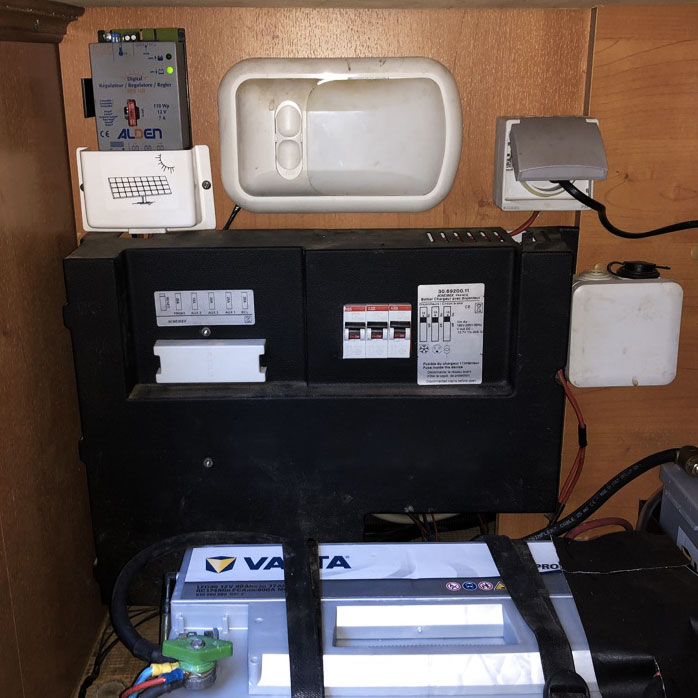
Types of leisure batteries : Advantages and disadvantages
Leisure batteries in campervans are typically deep-cycle batteries designed to deliver a steady current over an extended period. This makes them suitable for powering low-energy-consuming devices in campervan electrical systems. Recently, lithium batteries have become increasingly popular due to their numerous advantages.
Lead-acid batteries are cost-effective
These batteries are versatile and widely used in the campervan world, available in various sizes and capacities. New lead-calcium technologies have improved their lifespan (7 to 10 years) and their ability to discharge slowly, all at an affordable price (€80 to €150).
AGM and gel batteries: the middle ground
These types are valued for their reliability, quick recharge capability, and extended lifespan (10 to 12 years). They are resistant to temperature fluctuations but come at a higher investment cost (€150 to €250).
Lithium batteries offer superior performance
They provide exceptional performance with a lifespan of over 20 years and rapid recharge times (1 hour). However, they can be costly (€1000 to €3500).
For our needs, we chose these AGM batteries and have been satisfied with them so far ☺️
How to maintain your leisure battery to extend its lifespan
Regular maintenance of your leisure battery is crucial to ensure proper operation and prolong its lifespan. Here are some tips:
- Regularly inspect the electrolyte level in your battery (for lead-acid batteries) and top up with distilled water if necessary.
- Regularly check the voltage of the battery and ensure it remains within the normal range (between 12.6V and 13.8V for a 12V battery).
- Use a metal brush to clean the battery terminals to prevent corrosion. Ensure that terminals are securely tightened.
- When your camper is not in use, connect it to a 220V power source at least once a month to maintain a sufficient charge level and optimize battery lifespan.
Estimating your energy needs to choose the right leisure battery
The first step in selecting the ideal leisure battery for your camper van is to evaluate your daily electrical consumption. Consider all the appliances you regularly use (refrigerator, heating, lighting, etc.) along with their power consumption in watts. Also, factor in periods when multiple devices may operate simultaneously.
Once you have estimated your consumption, it’s important to add a safety margin by including an additional 20% to 30% to your total consumption. This ensures you have sufficient capacity in case of unexpected situations or if you decide to add more appliances later on.
How to recharge your camper van or motorhome batteries
There are several methods to recharge your camper van or motorhome batteries, and we will detail the main ones here: using the alternator, connecting to a 220V power source, and utilizing solar panels.
Charging batteries via the alternator
The alternator converts mechanical energy produced by the engine into electrical energy. This energy is then used to charge the vehicle’s main battery and, if equipped, the auxiliary batteries as well. By driving regularly, you can maintain optimal battery charge levels effectively.
Connecting to 220V power
Charging from a 220V power source involves simply plugging your camper van into an external electricity supply. This method is typically available at camping sites and provides a quick and efficient charge. However, it requires stopping at specific locations with access to electrical hookups.
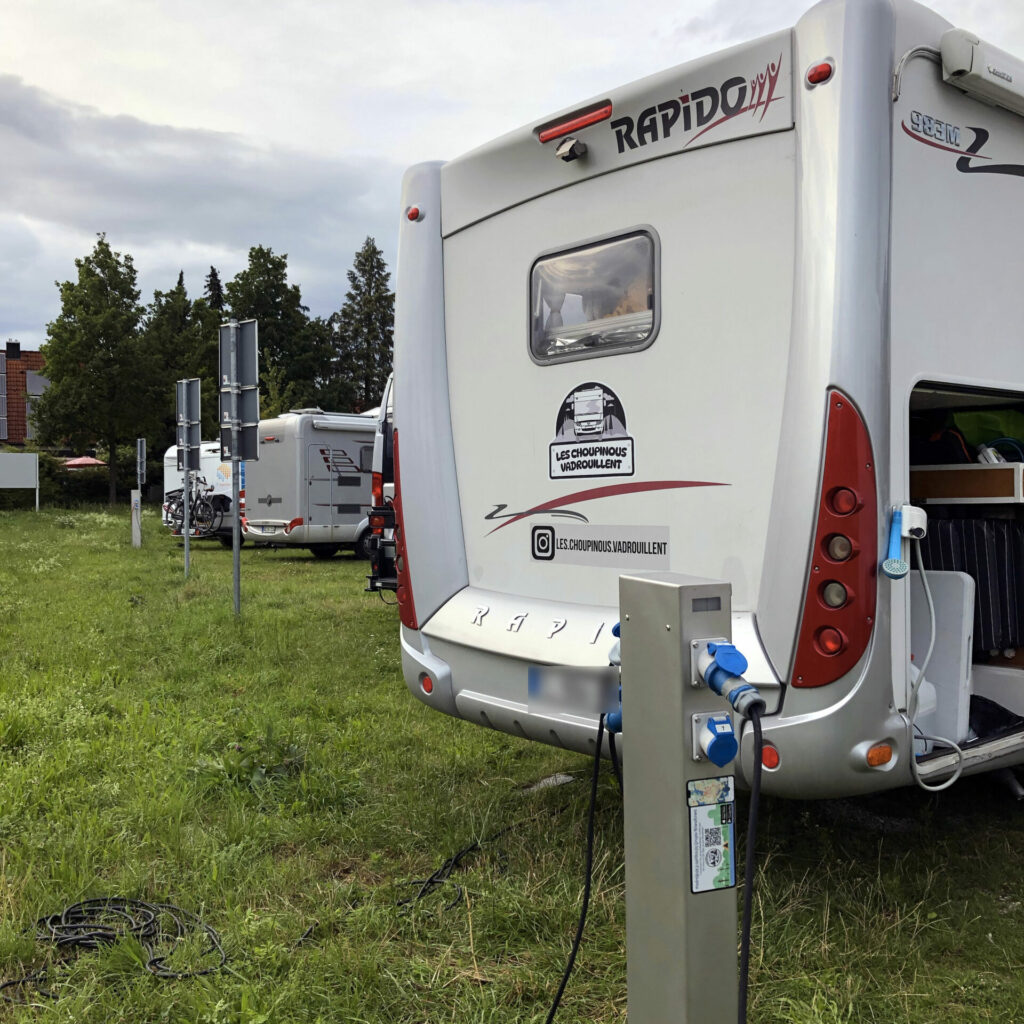
Charging via solar panels
Solar panels are an excellent solution for generating energy in your camper van without relying on an external power source. They convert sunlight into electricity, which can then be used to recharge your auxiliary batteries. Solar panels come in various types (fixed or tiltable) and price ranges depending on their output power. This variety allows you to easily find a model that suits your needs.
Managing electrical consumption in your camper van
To optimize your electrical autonomy, mastering your consumption is crucial. Here are some tips to save energy in your camper van:
- Opt for energy-efficient LED lights and turn off unnecessary lights promptly.
- Avoid high-energy appliances like microwaves and hairdryers.
- Place your camper van in a spot with ample sunlight exposure to maximize solar panel efficiency.
- Charge your devices when the solar panel is producing sufficient energy.
It’s also important to check the cleanliness of your solar panel for optimum recharging: a dirty panel can greatly reduce its electricity output, so keep this in mind.
Bonus : our essential accessory for managing electricity in your camper van
Recently, we’ve started using the Victron SmartShunt external battery monitor. This device allows real-time monitoring of battery voltage and, more importantly, provides precise electric consumption at any given moment. You can also track when your battery is charging (e.g., via a solar panel) and monitor the remaining autonomy.
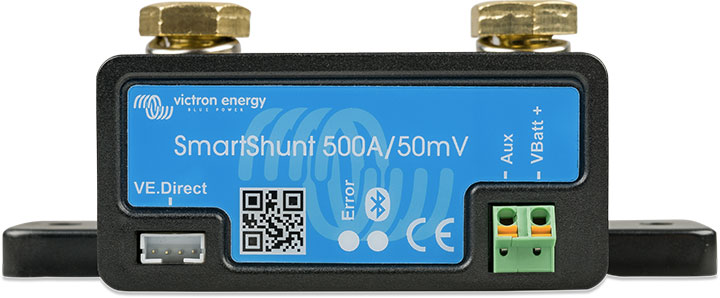
It easily installs onto your leisure battery and transmits data via Bluetooth to your smartphone.
Our conclusion
By following these tips, you’ll be able to effectively manage your electricity while camping in your motorhome and fully enjoy your trips with complete electrical autonomy! Remember, electrical setups vary between vehicles, so if you’re unsure, don’t hesitate to consult your preferred retailer for guidance on your electrical installation.

